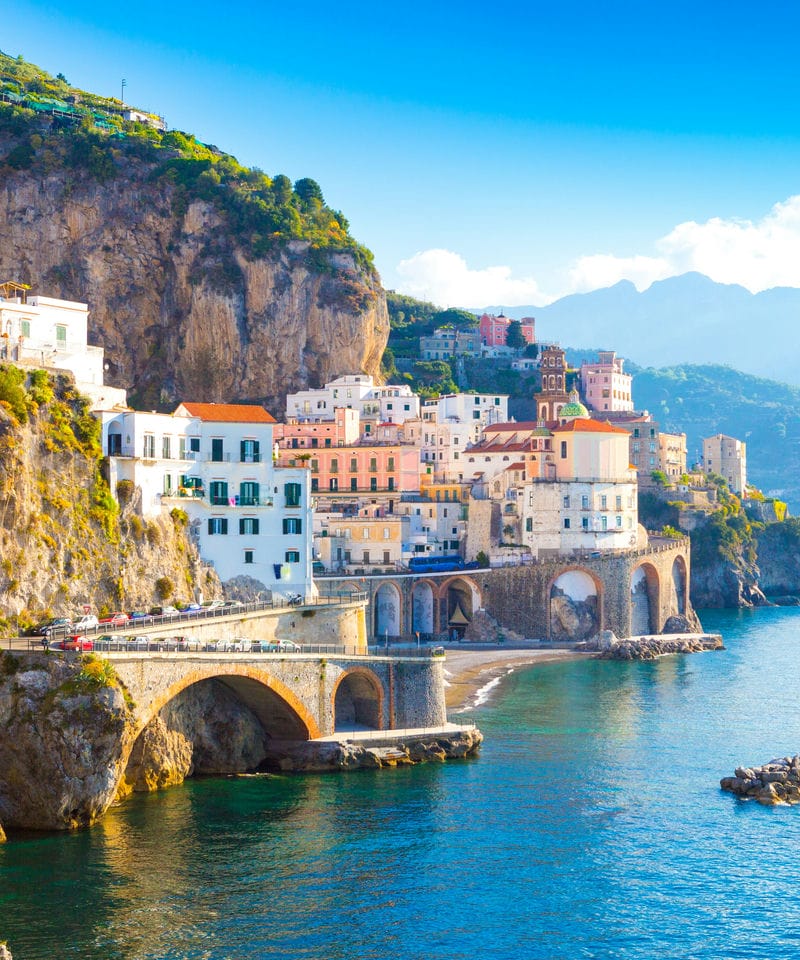
How Many Days Do You Need in Italy? | Italy Trip Planning Done Right
Key Takeaways | How Many Days Do You Need in Italy?
- Travelers often wonder: Italy or Greece? And how many days do you need in Italy? The truth is both countries are a dream. In this article, however, all roads (and flights) lead to Italy.
- You’ll know how long to spend in Italy when you’ve pinned down your preferred activities, experiences, and interests.
- Tailor your own custom itinerary with a mix of attractions. If your budget allows, try to see different Italian regions.
- Leave room for unexpected events and spontaneous travel adventures. Be flexible and adjust your plans accordingly.
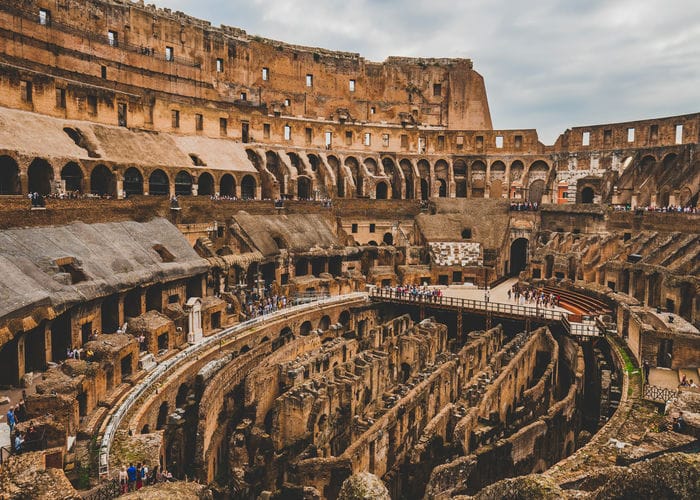
Bel Paese, the 'Beautiful Country,' is one of the world's most captivating destinations.
Italian history, immaculate Mediterranean landscapes, masterful architecture, and inventive Italian cuisine — every aspect is a marvel.
With 58 UNESCO World Heritage Sites and a world of opportunities for day trips, Italy is a gold mine of remarkable attractions and tourist locations waiting to be explored.
As magical as Italy is, the chances are you can’t experience the whole country in one trip. That’s why planning the right amount of time is the key to pinpointing where to go, what to see, and what to do during your Italian getaway.
This guide will help you get to grips with how to plan a trip to Italy so you can enjoy the country over a time period fit for you, whether you're solo, a couple, or experiencing Italy for families and Italy with kids.
Factors to Consider When Deciding How Many Days to Spend in Italy | Plan Like a Pro

If you can plan ahead and cover all the bases, your Italy trip will be one to remember.
Types of Activities and Experiences You Want to Have
Italy's countless amazing sites and attractions mean you must mix it up by balancing your taste with the must-see spots.
There are also extraordinary activities, like Italian food tours, wine tasting, and luxury shopping. Not to mention the world-class art museums and galleries.
The best things to see and do in Italy will be influenced by your travel bucket list and maybe the weather, so figuring out the best time to travel to Greece and Italy is essential. From the Colosseum in Rome to the Leaning Tower of Pisa, compile a diverse collection of the activities and experiences you’d like to check off your holiday adventures list.
Even if you decide to experience the weather in Italy in January, there are plenty of things for you to do!
Number of Destinations You Want to Visit
Just like you would with landmarks in Greece, time and costs will be your deciders for how to split your time.
Consider the Italian towns and villages you want to visit and their proximity to your chosen activities. The best base is always close and convenient enough for your movements between different locations.
Settle on the right number of destinations to visit by considering city adventures in places like Rome and Milan, alongside countryside escapes in regions like Tuscany.
Remember fabulous seaside destinations like the Amalfi Coast and islands like Elba and Capri.
The Best Time to Visit Italy | Weather and Temperatures
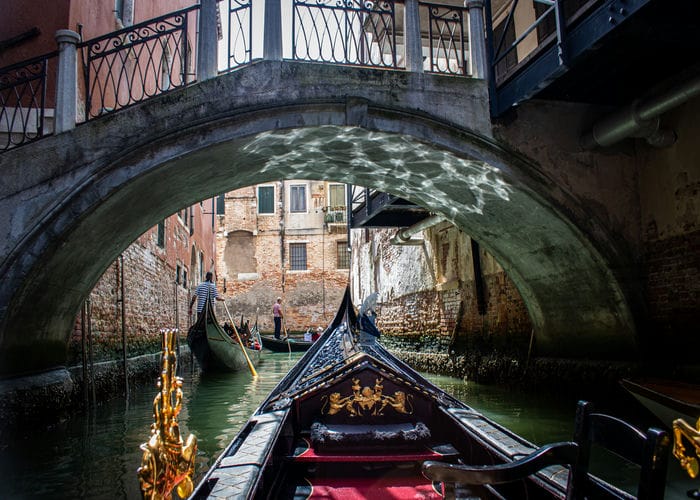
The time of year you travel affects prices for flights, accommodation, transportation, and tourist attraction entry tickets.
Weather conditions affect how you enjoy the activities (e.g., when and how attractions operate each season).
Northern Italy's freezing winters are perfect for snow babies. The weather in Italy in February and January, for example, is crisp and perfect for lovers of cold temperatures. At the same time, the weather in Italy in March can be milder.
Central and southern Italy's relatively consistent temperatures make these regions ideal playgrounds for travelers who prefer warm, sunny days.
Expect temperatures around 28° - 40° F (-2° - 4° C) during winter and 80° - 85° F (27° - 29° C) during summer. Naturally, temperatures vary depending on which Italian region you’re in.
Budget and Travel Style
Your budget and the kind of travel you’re accustomed to will guide most of your Italian trip planning.
Make solid, well-informed choices when deciding how long to spend in the country and how to divide your holiday time.
The primary considerations include:
- The accommodation type you’d like to enjoy while basking in the splendor of your Italian retreat
- The budget allocation for activities and experiences
- Plans for getting around Italy (e.g., when to take public transport vs. when to rent a car)
- Whether you prefer high-flying cities, countryside living, or lesser-known gems as your base
Personal Preferences and Priorities
Accommodation and activities are the two most important factors to weigh up. There may be a toss-up between luxury accommodation and top activities.
Hit the sweet spot with your personal preferences and priorities. Consider the pros and cons of accommodations like secluded resorts, city hotels, simple B&Bs, and fancy villas.
You may favor action-based activities or nature-inspired leisures. Either way, tailor your experiences to get the best of Italia.
Next Read: The Italians and Greeks know their culinary flavors. Sneak a peek at this Greek food guide to inspire your next Mediterranean adventure.
Recommended Itineraries for Different Lengths of Stay | Find Your Kind of Italy Itinerary
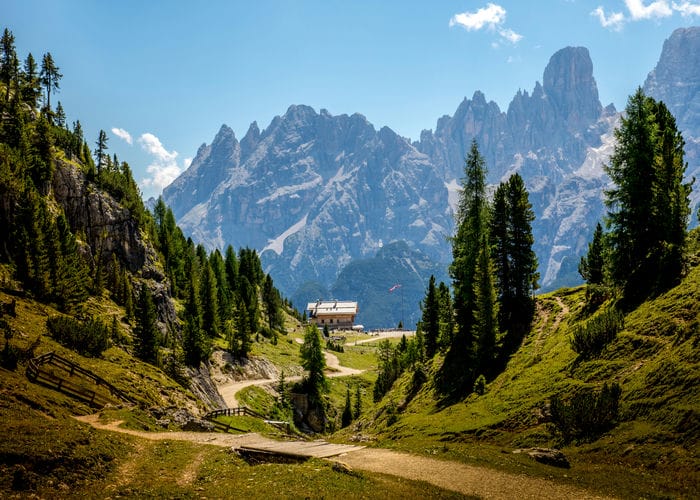
Need some ideas for great Italy itineraries? Sorted! Choose from the suggestions below.
3 Days in Italy: Rome and Vatican City
The smartest thing you can do is set out an Italy itinerary so that you know how to spend each day while you’re in Italy.
If you've opted for a modest three-day Italian retreat, Rome — the 'Eternal City' — is the place for memorable sightseeing and luxury brand shopping.
The capital city is the largest and your go-to for world-class hotels and restaurants.
Day One (Rome): Spend your first day getting a lay of the land after settling in your hotel in Rome. Via Del Corso, a buzzing street in Rome's historical center, has charming, narrow streets that lead to vibrant piazzas.
You can mingle with the locals, sample delicious treats, and shop for gifts there.
Via del Governo Vecchio, Via Cola di Rienzo, and Via Dei Condotti (yep, all the Vias) are equally lively streets offering unique shopping experiences.
Day Two (Vatican City): Let all roads lead you to the home of the Catholic church.
Explore Michelangelo’s Sistine Chapel and the Vatican Museums. Roam around the city, admiring the stunning Italian architecture in Saint Peter’s Square.
Day Three (Rome): Rent a Vespa from a reputable company like Rome by Vespa and discover the capital city on your own accord.
Visit the Villa Borghese Gardens, Trevi Fountain, and Piazza Navona. If you love art, zoom to the Capitoline Museums and Borghese Gallery to appreciate the finest creative works.
5 Days in Italy: Rome, Florence, and Pisa

When spending more than a couple of days in Italy (but under a week), it's best to pick out three major cities with popular tourist attractions. Rome, Florence, and Pisa won't disappoint.
It’s always a great idea to kick off your holiday adventures in the capital city.
Days One and Two (Rome): Spend your first two days in Italy indulging in thrilling retail excursions and culinary experiences in Rome.
Visit hot spots like Castel Romano Outlet, Via di Monserrato, and Via dei Coronari to snag stylish Italian clothing, shoes, jewelry, and trinkets.
Whether you prefer a full-service ristorante, a smaller trattoria, or a simple osteria, Italian dining is always mouth-watering.
Sample delectable arancini dishes, focaccias, Italian cheeses, ossobuco, and more at the best eateries in Rome. Pro Loco Pinciano, La Tavernaccia, Altrove Ristorante are some tourist favorites.
Don’t forget Italian classics, gelato and truffles!
Days Three and Four (Florence): At the mid-way point, it’s the perfect time for a self-guided tour around Florence. Learn about Renaissance history and visit the Medici family palaces.
You can’t be in Italy’s art and classical music capital without a showing or two. Depending on your taste, visit the Museo dell’Opera for a classical number or the Bargello National Museum in a fortress.
Day Five (Pisa): Were you even really in Italy without a corny shot of you holding up the Leaning Tower of Pisa?
On your last day, visit the Piazza dei Miracoli to see the ‘miracles.’ Take Insta-worthy pictures at the Leaning Tower of Pisa, the Camposanto (a monumental graveyard), the Pisa Cathedral, and the Baptistery of Pisa.
Compare: Greece itineraries for five days
7 Days in Italy: Rome, Florence, Pisa, and Venice

Day One (Rome): Your trip wouldn’t feel complete without a visit to one of the world’s most awe-inspiring monuments, the Colosseum.
Appreciate ancient Rome through this inspiring work of architectural genius.
Day Two (Florence): Are you keen to splurge on a bit of luxury shopping? Florence is where Gucci originated, so if your wallet allows, you can purchase some gorgeous Gucci items for your wardrobe.
Via Giovan Battista Zannoni is a bustling shopping street with cute boutiques selling quality bags and jackets.
Days Three and Four (Pisa): Pisa is small enough to explore without a car. Rent a bike and cycle through the city, or brave a self-directed walking tour in the town’s central area.
Once there, you’ll find the Palazzo Blu museum of art and culture. There are many quaint cafés and coffee shops where you can delight in delicious edibles and beverages.
Days Five, Six, and Seven (Venice): To seal the deal and bring your Italian journey to a close, mix it up in Venice.
Enjoy scenic walks or a gondola ride along the Grand Canal, then visit the prestigious Peggy Guggenheim Collection Museum and the famous Piazza San Marco.
There are several other galleries, palaces, and monuments to explore along the Grand Canal.
Compare: Greece itineraries for one week
10 Days in Italy: Rome, Florence, Pisa, Venice, and Cinque Terre

Days One and Two (Rome): Make your first two days all about seeing some historical sites.
The Colosseum and Vatican City are two of the most rewarding places to be in the capital city. Both sites feature flawless architecture and significant lessons in Italian history.
Days Three and Four (Florence): Dedicate a whole day to exploring landmarks like the Florence Cathedral and nearby attractions.
On day two, enjoy artistic pleasures with a visit to the world-famous Uffizi Gallery and other museums.
Days Five and Six (Pisa): Discover hidden gems in Pisa. Spend time in Piazza dei Miracoli taking pictures. If you’ve got it in you, climb over 200 stairs to reach that Leaning Tower.
On your second day in Pisa, meander whimsically at locations like the Pisa Botanical Gardens (which has a museum) and Giardino Scotto (Scotto's Garden).
When night falls, socialize at Orzo Bruno Pisa — which serves fantastic craft beers and ales.
Days Seven and Eight (Venice): Venice delivers on quintessential Italian cultural experiences. Fill both days with sightseeing at attractions like Doge’s Palace, Accademia Gallery, Rialto Bridge, and Ca’ Pesaro.
Days Nine and Ten (Cinque Terre): Cinque Terre in Italy’s Liguria region comprises five colorful villages: Vernazza, Corniglia, Manarola, Riomaggiore, and Monterosso al Mare.
Enjoy your last days in Italy at the beach, hiking, wine tasting, and sunset-watching.
Compare: Greece itineraries for ten days
14 Days in Italy: Rome, Florence, Pisa, Venice, Cinque Terre, Amalfi Coast, and Naples
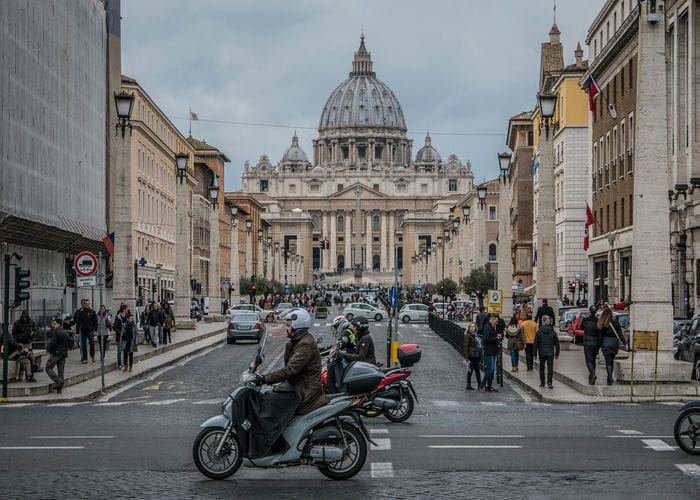
Days One and Two (Rome): Ease into your trip with some light shopping. Rome has many boutiques, fashion houses, and department stores where you can pick up stylish Italian threads.
Besides the major tourist sites, you can hop onto a tram and take a no-fuss, no-frills appreciation joyride from one part of the city to another.
Days Three and Four (Florence): Florence gave the world the Renaissance. It's worth it to dedicate some time to learning some history.
The Florence Cathedral, Palazzo Vecchio, and the Basilica of San Lorenzo, are only three important attractions.
There are enough Renaissance landmarks in Florence to fill multiple pages of your Italy Italy travel journal.
Days Five and Six (Pisa): Spend one day in Pisa soaking up Italian history and culture at landmarks like the Museo dell’Opera del Duomo.
Then relax on the following day with laid-back activities like an independent walking tour around the Borgo Stretto area.
If you want to experience Pisa nightlife, head to spots like Sud, Chupiteria, and Tree.
Days Seven and Eight (Venice): Explore the wondrous Basilica monuments of Venice; Saint Mark’s and Santa Maria della Salute are two of the most elegant.
The Grand Canal is lined with luxurious palaces that make for outstanding photography.
Days Nine and Ten (Cinque Terre): By now, you might deserve a coastal adventure. Live it up in Cinque Terre. Take boat rides between the villages and mix with the locals.
On day ten, you can explore Cinque Terre's villages by touring the streets and stopping at the local eateries for good old Italian grub.
Days Eleven and Twelve (Amalfi Coast): Enjoy the freedom of exploring a Mediterranean paradise on the Amalfi Coast.
There are beautiful little towns, beaches, and cliffs to get lost in (not literally). You can trek, cycle, and do all the water sports that tickle your fancy.
Days Thirteen and Fourteen (Naples): As you wind up your trip, salute Italy the way all Italians love to express their culture, heritage, and zest for life — with great food and wine.
Go on wine and food tours that’ll give you unforgettable Italian taste sensations.
Compare: Greece itineraries for two weeks.
Tips for Maximizing Your Time in Italy | Keep Your Travels Smooth
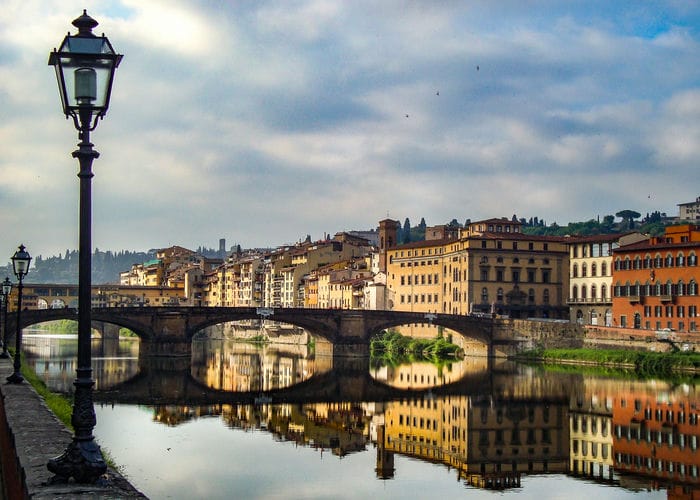
Follow these tips to make travel between destinations easy and enjoyable.
Prioritize Your Must-See Attractions and Experiences
You’ll fall in love with everything about this astonishing country in a heartbeat.
Italian culture, warm hospitality, the generous nature of Italian people, and all the magnificent attractions — all of it is a wonderful experience.
Prioritize the non-negotiable must-see attractions and holiday adventures to experience everything you've always wanted to enjoy in Italy.
These might include a romantic couples' gondola ride down the Grand Canal in Venice. Or exploring the Herculaneum Archaeological Site in Ercolano.
The ancient Greek ruins at the Valley of the Temples in Agrigento, Sicily, are also a major hit.
You may even discover one region, like Piedmont in northern Italy. Lonely Planet identifies Piedmont as an exceptional area for culinary experiences, art houses, hiking trails, and more.
No matter your itinerary’s design, as long as there’s a clear plan and flow of movements.
Plan Your Itinerary Strategically to Minimize Travel Time
Not everything will be seamless when traveling abroad, especially in a country as busy and exciting as Italy.
You've got to leave room for getting lost or delayed, surprises, and some travel spontaneity.
You can still ensure that your trip is as smooth and as comfortable as possible. Use these three pro tips to plan strategically to minimize travel times between locations:
- Consider breaking your itinerary into regions, e.g., northern, central, and southern Italy. Transit times will be shorter between destinations.
- Opt for central lodging close to public transport routes and the hubs.
- Include destinations with as many attractions and activities in close proximity as possible.
Consider Taking Guided Tours or Hiring a Local Guide
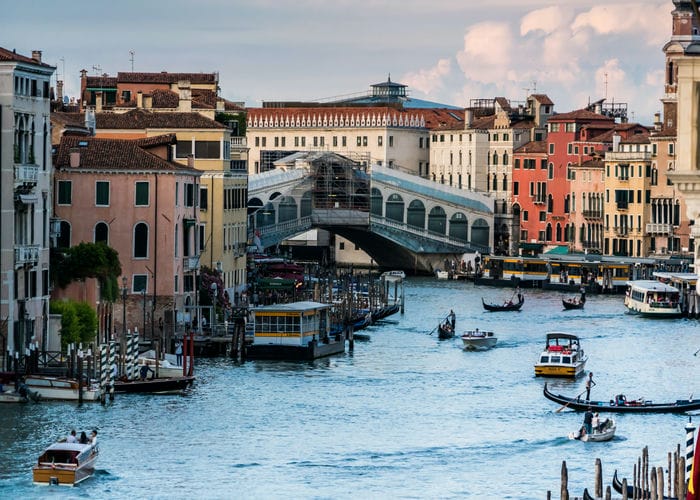
Guided tours are a superb way to savor Italy. With local experts at the helm, enjoy well-curated experiences balancing fun, value for money, and education.
You don’t need to stress about the Italian language and translations. Plus, tours are an opportunity to meet new people and make friends.
Here are three fascinating Italian attractions that are ideal for tours:
- The Pantheon, one of Rome’s most iconic buildings
- The Pompeii ruins
- Tuscany vineyards (the Chianti vineyards are most delightful if you forget about the Hannibal Lecter connotations)
Take Advantage of Public Transportation Options
There are several public transportation options in Italy. You can travel by train, tram, metro, or bus.
Your preferences, travel style, and willingness to embrace Italy will help you decide which option to make the most of and when.
Of all the options, trains are the best way to go — for inner-and-intercity travel. High-speed trains offer luxury and convenience, while slower trains travel steadily and cost less.
Ultimately, the choice is yours. No matter your preference, you can purchase your tickets from the relevant stations.
Be Flexible and Open to Unexpected Opportunities

Fodor's Travel affirms it: Italy is diverse with a lot going on. About 20 regions have distinctive customs and characteristics.
This means unplanned events will likely occur as you move around from one location to another.
Although it can be intimidating being in a foreign country and finding yourself in an unexpected situation, use these kinds of occurrences as opportunities to enrich your travels.
Here’s what to remember during your trip to Italy:
- The locals are friendly and welcoming. You can navigate your way out of unfortunate experiences like getting lost relatively easily.
- Approach people with respect. Use nifty tools like cellphone language translation apps to help you communicate effectively.
- If you’ve accidentally overspent and find yourself running out of money, be flexible enough to improvise.
- Bump down certain experiences and opt for cheaper accommodation for your remaining days in Italy.
- Embrace opportunities off the beaten track, like agriturismo adventures in the Italian countryside.
- Be open to forming new friendships with interesting strangers and fellow travelers.
- Don’t stress about the uncontrollable, like flight delays. Turn those moments into new learning opportunities about the places and people around you.
Final Thoughts | How Many Days Do You Need in Italy? The Short and Sweet of It

The right amount of time to spend in Italy depends on your budget, preferences, travel interests, and the itinerary you've mapped out for your trip.
Putting away enough savings, early bookings, and good planning well in advance are the keys to happy travels.
To enjoy the best of Italy, especially if it is your first trip there, seven to ten days are enough to see phenomenal places and the most famous sights, squeeze in a day trip, engage in outdoor adventures, and do once-in-a-lifetime activities.
Feeling inspired? Check out this article on things to do in Greece when you're ready for another magical European break.






